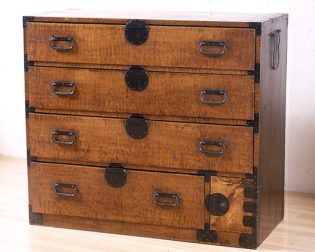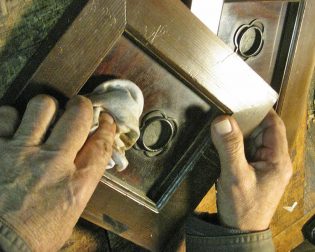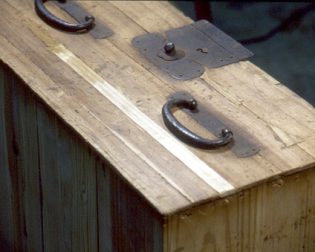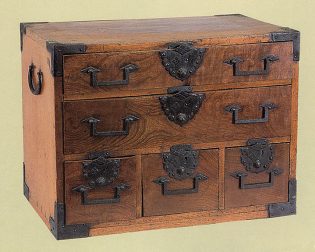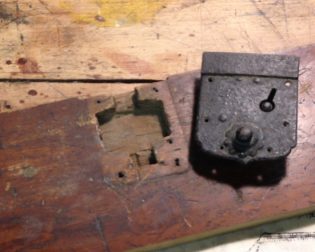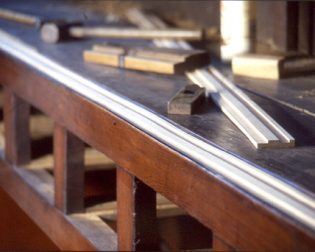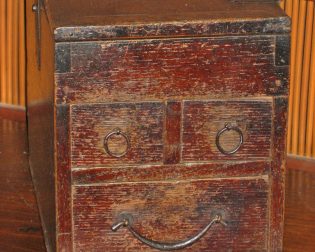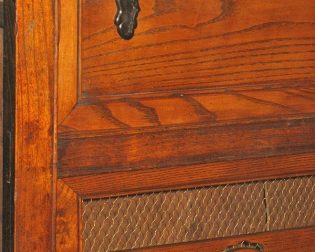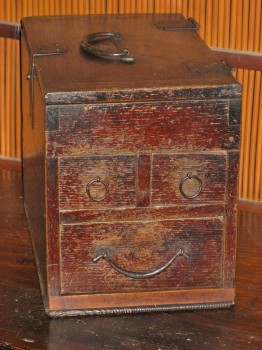 It is true that some Tansu were indeed part of interior life, such as the step-chest, tea chest, and kitchen cupboard. The storage cupboards for inventory and the account-book chest of the merchant were also interior tansu.
It is true that some Tansu were indeed part of interior life, such as the step-chest, tea chest, and kitchen cupboard. The storage cupboards for inventory and the account-book chest of the merchant were also interior tansu.
Indeed, it was the merchant class that became the largest clientele of tansu during the growing prosperity of the Edo period.
Tansu are apt representatives of the Edo period because they reflect the use of new tools and the growth of the woodworking trades. Tansu demonstrate the development of the cabinet maker/joiner as a common trade beyond the cabinet maker of elite furnishings or a sub-trade of the carpenter, as well as the development of the lacquersmith and ironsmith trades.
During the fifth century, tools and techniques arrived in japan from China that facilitated the woodworkers’ trade in fabricating nagamochi (trunks), which were used for storing clothing, armor, and household items. The growing military class would have such trunks finished in dark lacquer, an on-going preference.
The Meiji period (1868-1912) while short in time, was an energetic period that saw train travel, telegraph communications and the first industrial fairs and expositions. It is in these years that keen observers from the West recorded impressions of the old Japan and gave us our first introduction to Tansu. The Japanese, in turn, were fascinated with all things Western, and immersed themselves in the West’s ways and fashions.
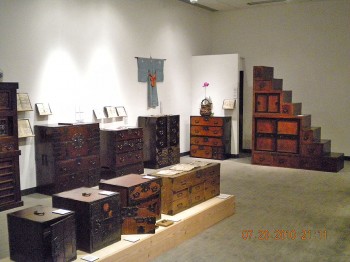 Considerable changes for tansu flowed from these changes. Foremost was the freedom of the cabinetmaker to build without regard to social position or government edict. Traditional craftsmen found themselves in a world of shifting patronage as well as changing economics and social situations.
Considerable changes for tansu flowed from these changes. Foremost was the freedom of the cabinetmaker to build without regard to social position or government edict. Traditional craftsmen found themselves in a world of shifting patronage as well as changing economics and social situations.
In the midst of this social upheaval, it is fascinating to find that tansu had a type of flowering. Castle towns, like Sendai and Yonezawa, Yahata and Sakata, Tsuruoka and Matsumoto, now became synonymous with mature tansu designs.
Chest designs in this period are most often associated with clothing storage and personal use. These are tansu where the three trades associated with this cabinetry – woodworker, ironsmith, and lacquersmith – reached their zenith.

